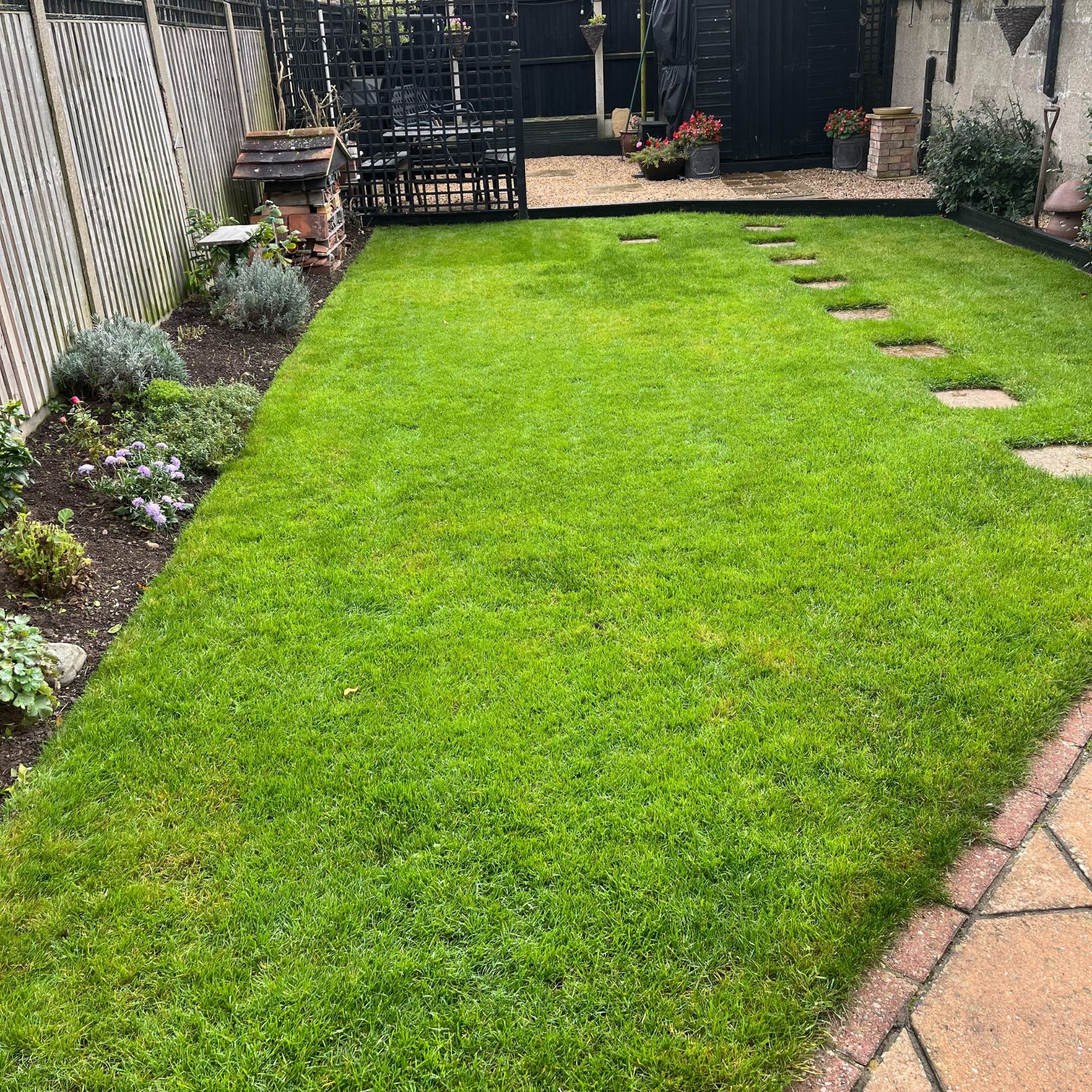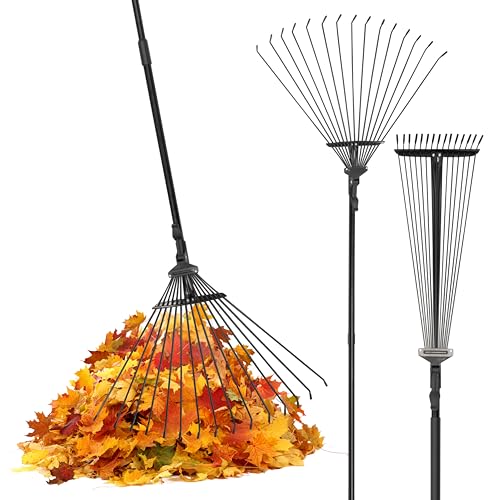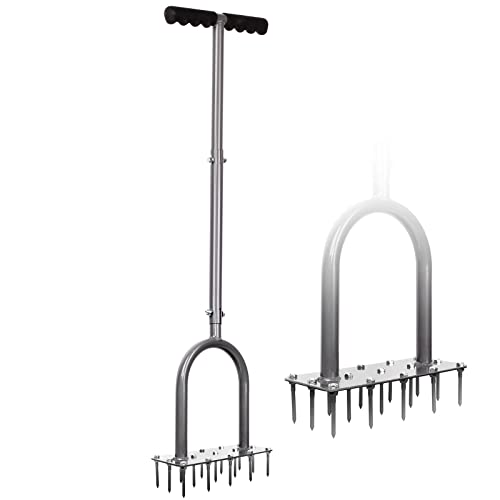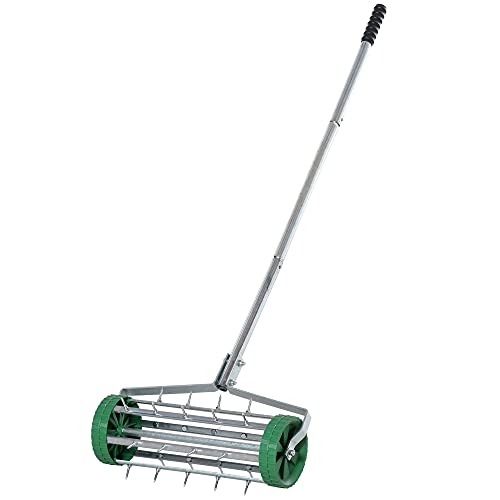What to do after scarifying a lawn – 5 crucial follow-up steps for a greener, healthier lawn
These tasks will give your grass an extra boost


Wondering what to do after scarifying a lawn? If you've just tackled this lawn care task for the first time, it's a good idea to get on board with some follow-up steps.
Learning how to scarify a lawn is one of the best things you can do for your garden: it promotes lush, green growth, and it can transform your garden. To keep your lawn in tip-top shape after the process, you'll need to have a few extra lawn care tips up your sleeve.
I checked in with lawn care experts to determine exactly what to do after scarifying a lawn.
1. Clear away debris

Scarifying leaves a lot of thatch, moss and soil behind, and once you’ve finished raking, you’ll need to clear it all away. While some people leave grass clippings on the lawn, it’s much more sensible to remove scarified thatch as soon as possible.
‘Use a rake or leaf blower to clear away the debris,’ advises Cheryl Harper, managing director of Greensleeves. ‘By removing the debris immediately, you prevent it from matting down and blocking light from reaching the grass.’

Cheryl Harper is the managing director of Greensleeves Lawn Care.
Established in 1998, Greensleeves Lawn Care is a UK-wide lawn care business with over 100 locations.
2. Aerate your lawn

It’s also a good idea to learn how to aerate your lawn at this point, especially if you’ve already been wondering how to improve lawn drainage.
‘Aerating the lawn is the first recovery step and one which is often neglected,’ says Ben Agnew, grass expert at Lawnsmith.
Sign up to our newsletter for style inspiration, real homes, project and garden advice and shopping know-how
‘If you have an older lawn, or are trying to revive a dry summer lawn, then adding a wetting agent at this point can be highly beneficial as it increases the water availability to grass roots and maximises water retention.’
You can buy Striking Lawns Premium Wetting Agent for £16.99 from Amazon.
3. Top dress

Once you’ve scarified, tidied and aerated your lawn, Cheryl recommends top dressing.
‘For best results, this should be followed by top dressing with a sandy or loamy soil mix to help level the surface and further encourage healthy root development,’ she explains.
So, if you’ve been wondering how to level your lawn, now is the perfect time to kill two birds with one stone.
Westland's Lawn and Turf Dressing, £16.99 from Amazon, or Hardy's Lawn Dressing, £14.99 from B&Q, are great choices.
4. Sow new grass seed

Scarifying can sometimes leave bare patches, so it's a good time to overseed your lawn in places.
‘After scarifying, it’s a good idea to get some grass seed down,’ says Chris McIlroy, lawn expert at The Grass People. ‘This will fill in any blank spaces and give your lawn a neat, uniform look.’
Then, add a little fertiliser. ‘Consider using a lawn feed high in phosphorus to support root establishment and overall recovery,’ adds Cheryl.
Pronto Seed Premium Grass Seed, from £8.99 is Amazon's Choice.
5. Feed your lawn (according to the season!)

Fertiliser can be a game-changer for a freshly scarified lawn, but you’ll need to make sure you’re applying the right type for the appropriate time of year.
‘Applying a high-quality autumn lawn feed (if scarifying in autumn) or a spring feed (if doing it in spring) can make a real difference in how quickly your lawn recovers,’ explains Cheryl. ‘These feeds are specially formulated to strengthen the grass and support new growth, giving you a healthier, greener lawn in the weeks that follow.’
Keep an eye out for the right ingredients, too. ‘Using a fertiliser containing potassium will help the grass fight off the stress of scarifying and help protect against disease,’ says Chris.
‘If you’re using a fertiliser with iron sulphate, then wait at least a couple of days before putting the seed in. For more reliable results, it’s worth waiting until the seed has germinated before applying fertiliser.’
FAQs
Do you need to water a lawn after scarifying?
Yes! Scarifying transformed my lawn within weeks, but as it was August, I had to use a sprinkler to keep it hydrated.
‘Lightly water the lawn daily for a few weeks, keeping the soil consistently moist until new grass begins to grow,’ advises Cheryl from Greensleeves.
‘Avoid overwatering – the soil should be damp, not soggy. A light misting early in the morning or late in the day is ideal, as it helps avoid evaporation and scorching during warmer weather.’
How long after scarifying should I cut my grass?
Don’t jump the gun on this one – you’ll need to wait for the grass to grow a little before mowing.
‘Wait until the new grass has grown to around 4-5cm before mowing,’ says Cheryl. ‘This usually takes around two to three weeks, depending on weather conditions and how well your lawn is recovering.
‘When mowing for the first time after scarifying, set your mower to a higher setting to avoid stressing the young grass shoots.’
Knowing what to do after scarifying a lawn is just as important as the process itself. With the right steps in place, your lawn should grow greener and lusher than ever.

Sophie joined the Ideal Home team as Gardens Editor in June 2024. After studying English at Royal Holloway, University of London, she began writing for Grow Your Own, which spurred on her love of gardening. She's tried growing almost every vegetable under the sun, and has a soft spot for roses and dinnerplate dahlias.
As Gardens Editor, Sophie's always on the lookout for the latest garden trend. She loves sharing growing hacks for every space, from herbaceous borders to balconies.



